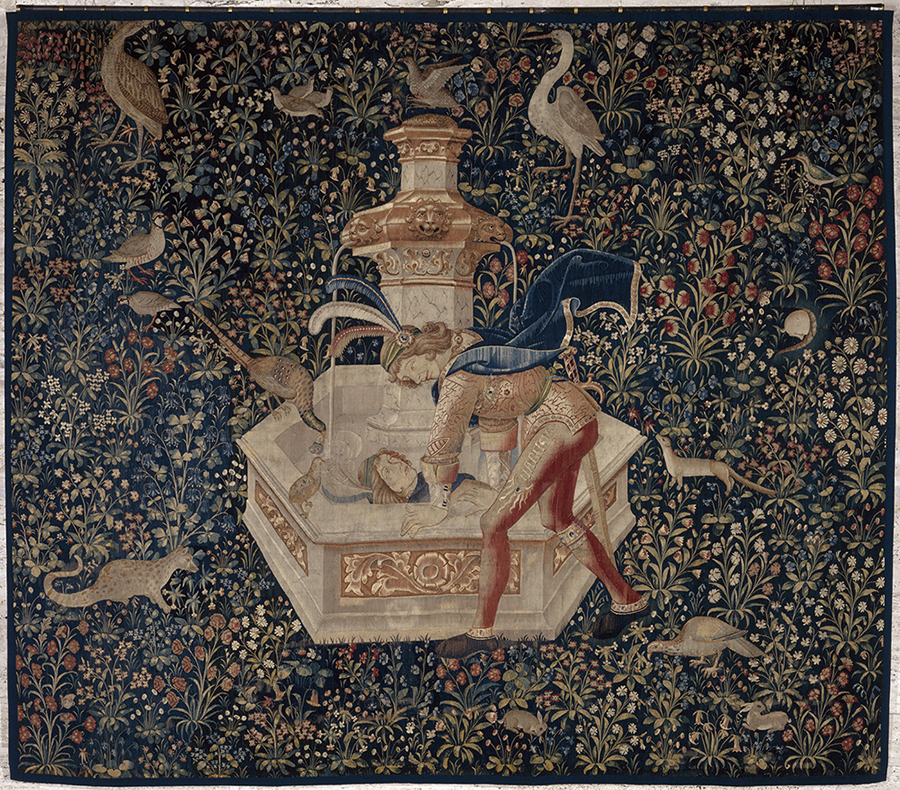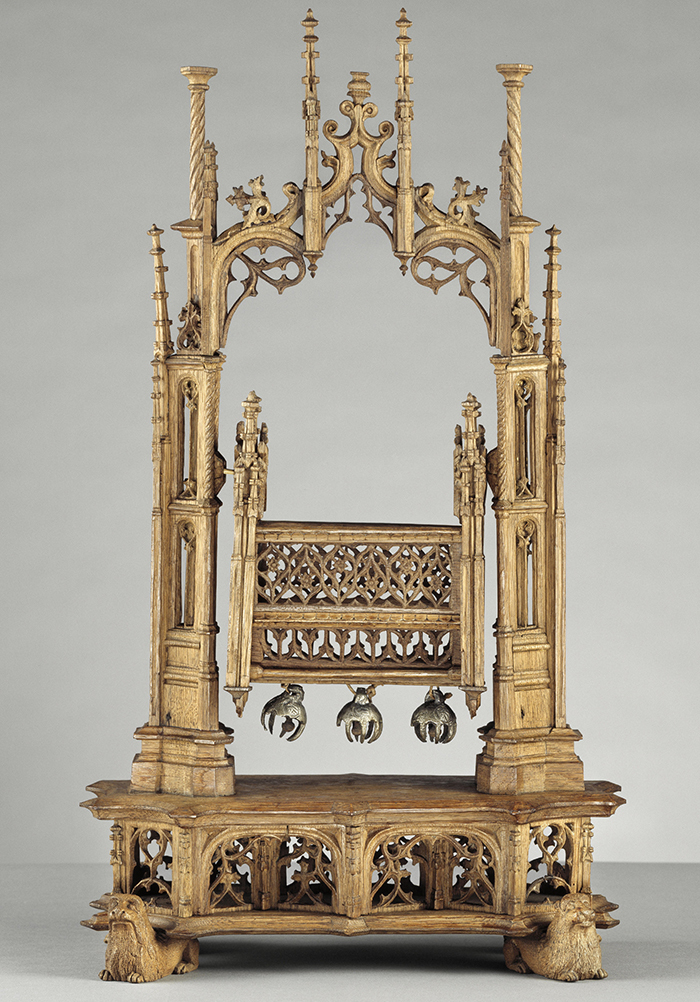At art exhibits, the one sense we can always count on to be stimulated is sight. Many times, we are prohibited from touching the works displayed, and our eyes are left to fill in where our other senses can’t.
But Martina Bagnoli wanted to stimulate our other sensations when she curated A Feast for the Senses: Art and Experience in Medieval Europe, the newest exhibition at The Walters Art Museum. People in medieval times, she explains, used their whole bodies to take in what was going on around them because they believed cognition was based on sensory experiences—and we could learn something from that way of thinking.
“This exhibit is all about enjoying beauty with all the senses in mind,” says Bagnoli, who, until 2015, oversaw the Walters’ medieval art collection. (She is now the executive director of the Galleria Estense in Modena, Italy.) “We want to try and get people to look at the world around them. We live in an age now where we’re bent over screens and phones . . . In order to be able to really look, you need the senses.”
With Bagnoli’s mission in mind, we’ve selected five works from the exhibit’s 100 manuscripts, tapestries, and objects that will make each sense come alive.
Sight

This piece Tapestry with Narcissus at the fountain from 16th-century France greets you splendidly when you enter the exhibit and depicts Narcissus, who was said to have fallen in love with his own reflection. Though the intricate stitching makes the figure come alive, everything around him is what makes this work so splendid. Your eyes will flit across its surface until coming to focus on his cape, which seems to flap in the breeze, the water droplets in the fountain, or the delicate flowers, with each petal so distinct you’ll think you can smell them.
Hearing

Religion was a main focus of medieval life, and bells were the instrument that reminded practitioners of their duties to prayer and worship. From the booming bells inside church steeples to the tiny chimes on this tiny finely carved wooden cradle from the Netherlands in the 16th century, “sound was supposed to complete your spiritual enlightenment,” Bagnoli says. The cradle in Crib of the Christ Child would ring when rocked, and would likely have held a doll of the Christ child. And Bagnoli included a recording of bells in this gallery, and their ethereal ringing gives you a sense of times past.
Smell
The Langdale Rosary circa 1500s England might seem like it fits more with touch. But Bagnoli noted that early rosary pendants often contained herbs and resins that emanated pleasing, earthy fragrances, as sweet aromas were often associated with holiness and deity. Next to this display is a similar rosary the museum staff created that patrons can experience for themselves.
Taste
Medieval banquets are legendary, hours-long affairs that call to mind images of feasting on exotic game, reveling in jugglers and dancers, and drinking copious amounts of wine from broad shallow bowls called hanaps. All the senses came alive during these gatherings, most assuredly the taste buds. And if you finished your glass of, as Bagnoli says, “murky, opaque wine”, you’d have a reward in beautiful, gem-like image at the bottom of the hanap you drank from, like this Hanap with a maiden taming a lion from the 14th century.
Touch
The devotional German text Schatzbehalter der wahren Reichtumer des Heils from 1491 contains fabulous woodcut illustrations that show readers ways to use different portions of their hands and fingers to remember meditations and saints. Bagnoli smartly displayed this book with a engraved, copper handwarmer, which was used by clergymen during the 13th century. You’ll look at your hands a different way, and you might even feel tingling from imagined heat.
A Feast for the Senses runs through Jan. 8, 2017.
